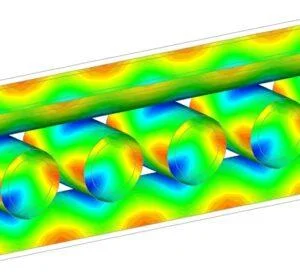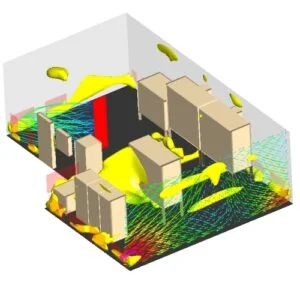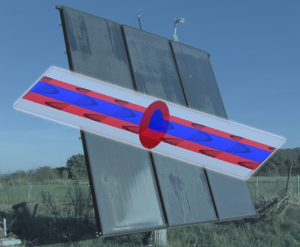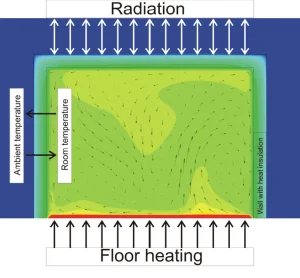Heating, Ventilating and Air Conditioning
· Strömungssimulationen in Räumen und Gebäuden ·
Air-conditioning and ventilation technology ensure the desired requirements for temperature, air humidity and air velocity in rooms. Closely connected to this are building services requirements, especially for ventilation and air-conditioning and heat supply systems.
The underlying physical, fluid-mechanical and thermal processes are analysed and optimised using modern methods of numerical flow simulation and thus offer the possibility of previewing and effectively planning new buildings or rooms.
The methods of numerical flow simulation have, for example, become an indispensable tool for the evaluation of air flows, particle loads and temperature distributions in cleanrooms. They also serve to optimise cooling systems as well as ventilation systems.
The close interaction of flow processes with components in air-conditioning systems or fans, which can lead to vibration excitation and thus noise pollution as well as material erosion, are investigated with modern methods of coupled flow and structure simulation.

Efficient filters
The filter effectiveness, taking into account the underlying physical fluid mechanical and thermal processes, can be effectively analysed and optimised using modern methods of numerical flow simulation. Covid-19-Update: Computer simulations make it possible to check the effectiveness of both short-term

Cleanroom
Cleanroom simulation represents an important tool to support the elaborate process of flow analysis and qualification for cleanroom approval. Taking into account furnishings, ventilation systems, heat and particle sources and using appropriate turbulence models, the three-dimensional representation of particle concentrations,

Solar thermal energy
Example for solar thermal energy: one-pipe circulation at low flow velocities in the collector.

Building Climate – Energy Efficiency
Schematic representation of the indoor air circulation in the cross-section of a heated interior taking into account transient environmental conditions
